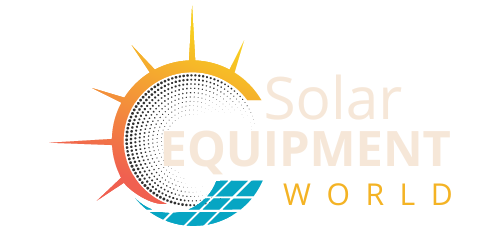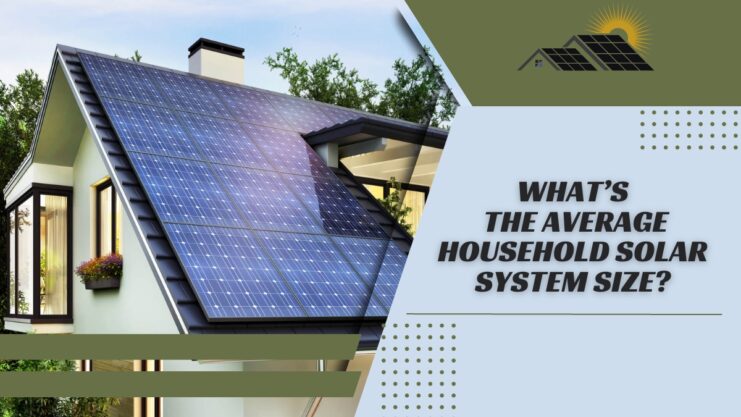Overview of Solar Energy
Solar energy is a renewable energy source with vast potential and numerous benefits. In its simplest form, it involves harnessing energy from the sun and using it to generate electricity or provide heat.
This article will provide an overview of solar energy, including its history, applications, and average household solar system size.
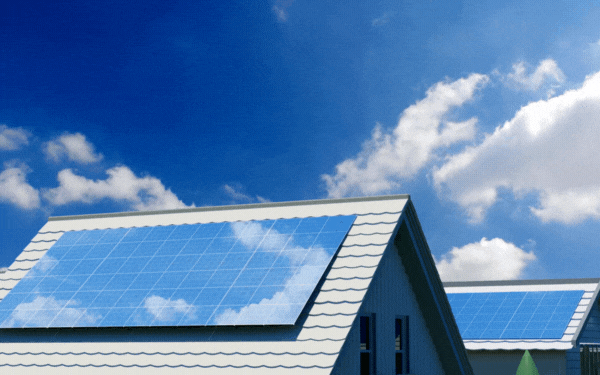
In recent years, there has been a significant increase in research on how both active and passive technologies can be used together effectively to reduce building energy demands while at the same time increasing comfort levels indoors—all while using fewer resources in terms of land area or embodied energy (the energy required to manufacture components).
This integrated solution involves designing structures that are efficient in their usage of materials while making effective use of natural lighting strategies; developing methods for controlling interior temperatures through ventilation strategies; generating electricity through appropriate technology solutions such as rooftop photovoltaic systems; managing water resources onsite; and harvesting renewable sources such as daylight, wind, and geothermal heat pumps.
By combining these aspects into an intelligent whole-house design strategy that works with nature instead of expending extra resources against it we can reduce our dependence on non-renewable fuel sources and help protect our planet’s future health at minimal cost to our pocketbooks today!
Benefits
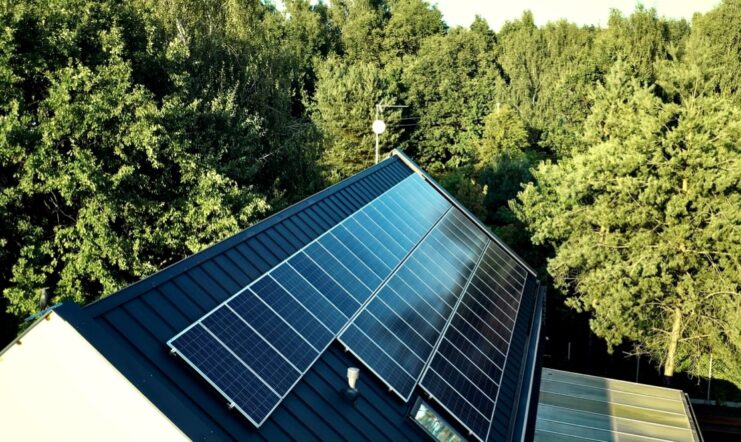
It is a renewable energy source with numerous benefits. It can drastically reduce the use of fossil fuels and help to combat the current climate crisis, while also delivering significant economic benefits. In addition to its environmental advantages, it has many advantages for consumers, including opportunities for cost savings on electricity bills and qualifying for incentives such as tax credits and rebates.
Solar energy systems are relatively straightforward investments for households, resulting in sizeable savings over the long term when compared to other types of electricity sources. A typical household solar system size consists of several components, including photovoltaic (PV) modules, mounting systems, inverters, optimizers or microinverters and batteries (if desired).
PV modules are typically installed onto roofs or ground-mounted in larger installations; they generate direct current (DC) power from sunlight during daylight hours just by using standard DC–AC converters supplied by the utility company. The standard AC power generated is then used immediately or stored in a home battery system for future consumption depending on time-of-use rates available in the consumer’s area.
This provides an excellent way to save money on utility bills and reduce our environmental footprint at the same time. By opting for a solar installation now – even just a small one – households can prevent future increases in price from their utility provider while also helping to achieve net zero goals faster within their specific community.
As our awareness of climate change continues to expand we are seeing increased demand for sustainable sources of electricity such as those derived from solar power; this will only lead to further incentives being offered by governments around the globe keen on improving social and environmental outcomes through renewable generation technologies like this one.
Solar System Size
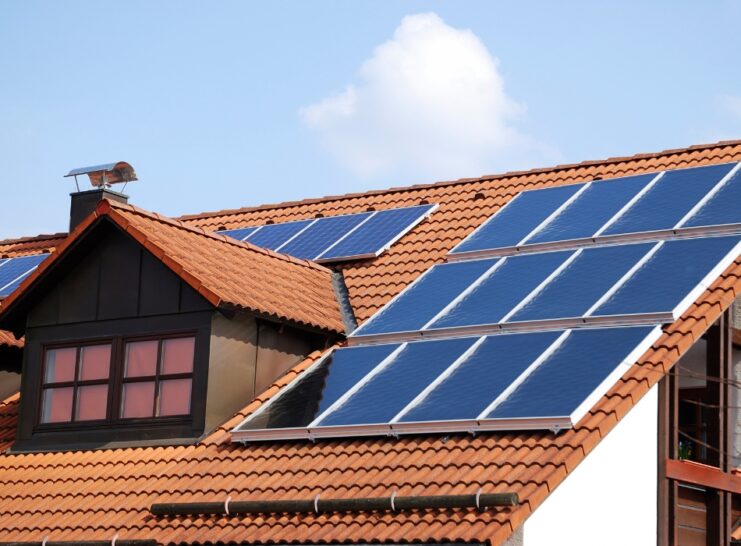
For the average home, the size of the solar system you will need is determined by a variety of factors including the amount of energy you use, the size and angle of your roof and the available sunlight.
Before choosing a solar system, it’s important to understand what size system you should install and how much energy it will generate. Let’s look into the average household solar system size.
Factors that Affect Solar System Size
When it comes to the size of a home, there are a few key factors that you should consider when making your decision. This includes your energy consumption, roof space, financial budget, and personal preferences.
The most important factor is your energy consumption or the size of your home’s electricity bill. Depending on the size of your home and the area you live in, you will have different energy needs. In general, homeowners consume an average of 8-10 Kilowatt-hours (kWh) per day. You will also want to consider any lifestyle considerations such as electric vehicles or larger appliances that may change your usage.
You will also need to look at the available roof space for mounting solar panels in order to determine the maximum output of any given system. The amount of space available for the system can be influenced by structural elements such as chimneystack intrusions or neighboring buildings, but it is important to note that even a large house could suitably accommodate quite a large installation if all other factors are considered favorable.
Cost & Budget also play an important role in solar panel system sizing too – so much so that most people decide on their budget before selecting their solar system size; even when they have sufficient roof space available for larger systems. It is possible to scale up and add more components later, but this can affect how much money you save with rebates or other incentives due to the cost overruns incurred with additional purchases and upgrade project costs which must be taken into account when setting your overall budget and system size goals.
Finally, personal preferences need to be addressed too – as we all want our lifestyles facilitated in different ways; while increasing overall sustainability within society along with helping reduce global warming trends across our planet – one home at a time! When making decisions around solar system size – weigh up all these factors carefully along with considering how each applies uniquely towards meeting those wants & desired outcomes for providing individual-level clean energy source power solutions for modern households globally today!
Average Size
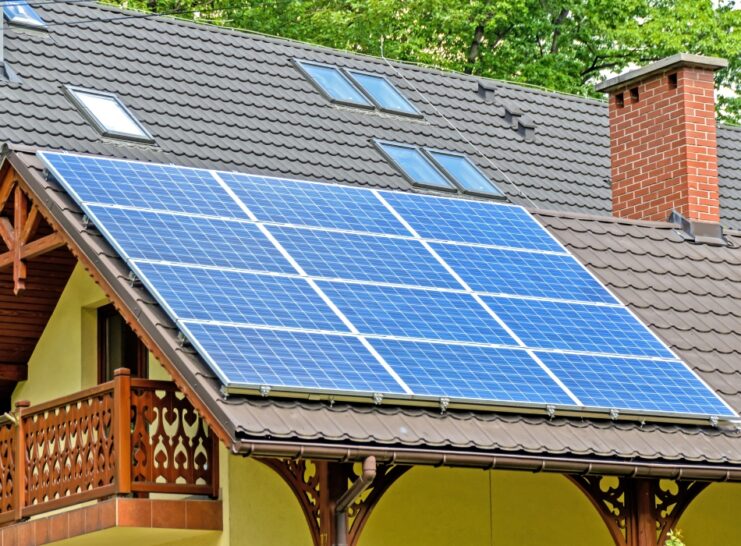
The average household solar system size is approximately 5 kilowatts-DC (kW-DC). This is equal to the amount of energy generated by about 17 medium-sized 300-watt panels. The actual size of a solar panel system for a home will depend on the home’s electricity consumption and the area available to mount the panels.
The average household uses 10,400 kWh per year according to the U.S. Energy Information Administration, which means that an average system will produce 5.2 MWh of solar energy per year when designed with no shade or very minimal shade. Based on this data, your electricity bills can be reduced by 50% at least if you install a 5kwdc solar system at your home.
When you determine what size solar panel you’ll need for your house, consider factors such as:
- Available roof area that gets adequate sunlight
- Solar resources in your region
- Average temperature/cooling needs in your area
- Any applicable local incentive programs
- Your electric company’s net metering policies
With all this information in mind, you can choose the most suitable and cost-effective system size for your household. Working with a qualified installer will be helpful in making sure that all necessary components are included in order to maintain the highest quality and efficiency of your solar panel system.
Components
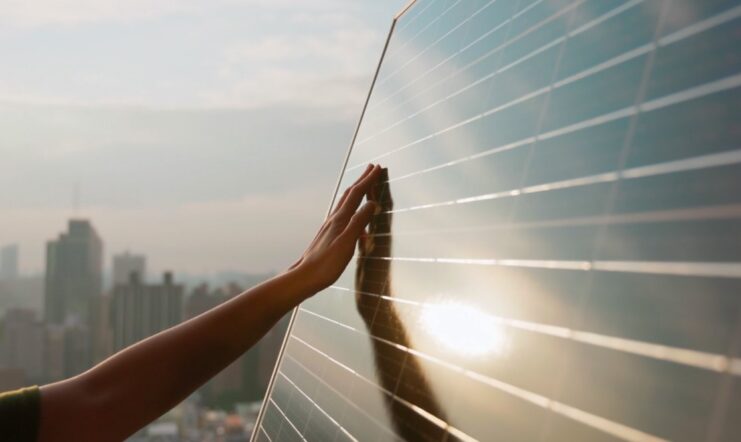
Understanding its components is important for determining the size and type of system you will need. In order to determine the size of a household solar system, you need to understand the components that make up the system.
Generally, there are several components that must be considered, including panels, inverters, batteries, and charge controllers. Each of these components will be discussed in more detail.
Solar Panels
Solar panels form the backbone of any solar power system. They are made up of specialized light-capturing materials, known as photovoltaic cells. When these cells absorb photons from sunlight, they generate electricity from these photons and direct the current to an inverter. This electrical energy is then used for a wide variety of applications in the house such as heating or charging mobile devices.
They come in a variety of sizes and technologies. Some basic models will have either 72 or 96-standard efficiency monocrystalline cells that come in equal lengths and widths with an average size ratio between 3-4 ft and 6-8 ft respectively for each panel. Higher power output models can utilize more complex designs, such as thinner and more efficiently oriented crystalline silicon cell materials to increase power output by up to over 30%.
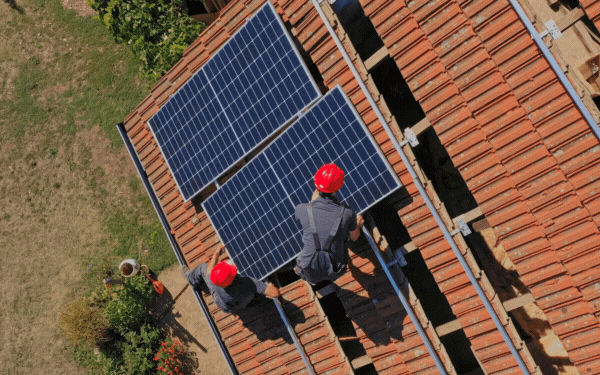
The size array in a residential system depends on factors like roof area and local climate, but also on overall usage requirements since each watt added will require an additional panel in order to meet home energy needs more adequately. Common household solar systems can have around 8-12 panels installed, while larger systems can include up to 24 or even 36 panels if greater daily generation capacity is required.
Inverters
They are a key component in any solar photovoltaic system. They convert direct current (DC) electricity that is generated by the solar panels into alternating current (AC) electricity that can be used in your home. The size and type of inverter needed for an installation depends on a number of factors, such as system size, module type, and grid connection rules.
The two most common types of inverters used in residential systems are string or central inverters and microinverters. String or central inverters work best for large solar installations and are connected directly to the main panel board that feeds electricity into the house wiring system. The output from the array of solar panels is wired in series into a single input for the string inverter, which then outputs AC electricity to power your household appliances and equipment.
Microinverters are best suited for small residential systems because they enable you to install fewer solar panels than would be required by a string-inverter-based system with the same output rating. Microinverters mount directly onto each individual panel, so there is no need for long cables between them. Each microinverter then provides AC output individually to your home electrical wiring backbone, ultimately reducing losses and increasing power production efficiency compared to using only a single string-inverter-based system layout.
Mounting System

This is an integral part of a residential PV system. It provides the structural support necessary to anchor the panels and keep them oriented toward the sun, allowing them to produce their maximum electrical yield. Additionally, the mounting system must endure any extreme weather conditions that may occur in its geographic location.
There are three primary types of solar mounting systems for homeowners to choose from rooftop/ground mount, pole mount, and tracking systems. The most popular option by far is a rooftop or ground mount, which involves attaching the solar panel array directly onto either an existing rooftop or a structure built separately on ground level. This option allows for an array that can be adjusted for optimal orientation towards the sun at any given time of year.
Pole mounts involve suspending panels from long posts anchored into the ground, usually in open areas such as fields or parking lots; they’re most commonly used in commercial applications or when there’s no viable option for a rooftop array due to lack of space. Tracking systems follow direct sunlight throughout the day, dramatically increasing its overall electricity production capacities — but they are much more expensive and complex than either pole mounts or grid-tied arrays mounted on rooftops/ground surfaces.
Solar System Cost
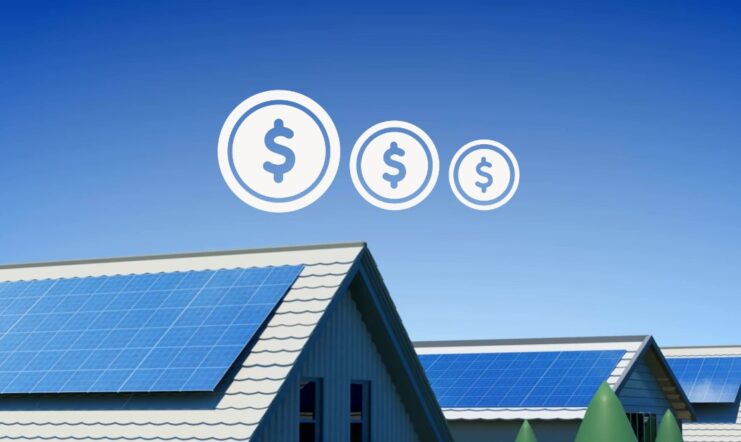
The cost varies widely based on a number of factors such as size and location. One of the primary factors that impact the cost of a solar system is the size of the system. So, what is the average household solar system size?
In this section, we’ll delve into the details to answer this question.
Factors that Affect Cost
The cost will vary based on its size, quality, location and installation requirements. They typically range in size from 3 to 8 kilowatts (kW). To accurately determine your cost, you’ll need to consider the following factors:
-Size: Smaller systems are less expensive than larger ones. When determining the right size for your needs, make sure to consider future changes in energy usage; you don’t want to be stuck with an undersized system that won’t meet your growing energy needs.
-Quality: Highly efficient solar power systems are more expensive than those with lower efficiency ratings. Choosing high-quality components ensures that your system will operate properly and provide maximum efficiency over its lifetime.
-Location: Some areas provide incentives for installing a solar power system such as discounts, tax rebates, or net metering policies; investigate if any benefits apply to you before purchasing a system.
-Installation Requirements: If you’re in a rural area or need specialized installation services such as excavation or trenching, these additional costs must be considered when calculating the total installation price.
Ultimately, the size and quality of the components will influence your final costs; higher capacities and higher quality components tend to drive up prices while lower capacities and lower quality components can help keep costs down.

Average Cost of a Solar System
The cost can depend on several factors, including the size of the solar array, local labor and equipment costs, merchant charges from the solar installer’s suppliers, and the federal tax credit for renewable energy.
The average cost ranges from around $4 per watt for an entry-level all-black system to over $7 per watt for high-efficiency modules with robust mounting frames and premium warranty coverage. This reflects an average of typical pricing for turnkey systems that vary greatly in terms of size, components sorted by brand and model, site conditions (e.g., roof type/tilt/orientation), permitting fees, etc.
Generally speaking, a 10 kW or 10,000 Watt Solar System will range between $25,000 to $50,000 before incentives are applied while larger 20 kW or 20kW systems can range between 45k and 80K; depending on the quality of components used i.e Solar panels, Solar Batteries and Inverters used in that installation. The installation cost varies greatly depending on location/state/type whether it is a rooftop or ground-mounted system, geographic layout, etc.
It is important to get quotes from multiple installers to compare which company offers better cost savings options due to available incentives in your state or any additional discounts which could bring down your net outlay required for installation drastically.
FAQs
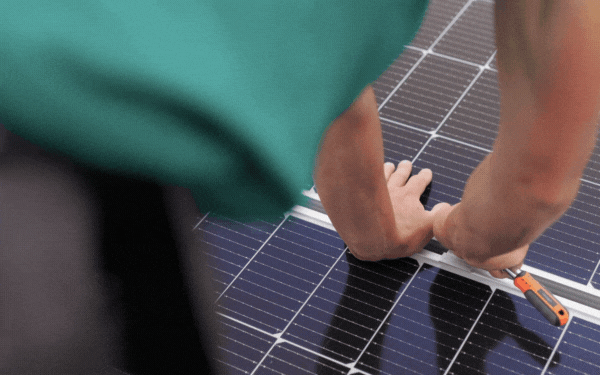
How many solar panels are required for an average household solar system?
The number required for an average household solar system depends on the wattage of the solar panels and the energy needs of the household. Typically, a 6 kW solar system requires around 20-25 solar panels.
Can a smaller household have a smaller solar system?
Yes, a smaller household with lower energy needs can have it.
What is the maximum size of a household solar system?
The maximum size is determined by the energy needs of the household and the available roof or ground space for solar panels.
What is the minimum size of a household solar system?
The minimum size is determined by the energy needs of the household and the available roof or ground space for solar panels.
What are the benefits of a larger solar system for a household?
It can provide more energy for a household, potentially leading to more significant cost savings and energy independence.
What are the benefits of a smaller solar system for a household?
It can still provide significant energy savings and cost savings and may be a better option for households with lower energy needs or limited space for solar panels.
How long does it take to recoup the cost of a household solar system?
The time it takes to recoup the cost of a household solar system depends on various factors such as the size of the system, the energy needs of the household, and the cost of electricity in the area. Typically, it takes around 5-7 years to recoup the cost of a household solar system.
Can a household solar system produce excess energy?
Yes, it can produce excess energy, which can be sold back to the grid or stored in batteries for later use.
Conclusion
After considering the various factors such as climate, location, budget, and energy needs, the average household solar system size is around 5kW. That said, the size of it depends on your energy needs, as well as the size of your roof and the amount of shade it gets throughout the day.
Ultimately, the right solar system size for your home needs to be determined through further research, analysis, and consultation with an expert.
